|
Ideally horses should start in-hand before they are backed. This way they will understand what their rider will be asking of them when they are ridden as well as having a better understanding about their bodies. It prepares them both mentally and physically for their ridden career.
If the in-hand training is continued in parallel with the horses’ ridden career it should be possible to introduce all movement in-hand initially. This makes the ridden training flow easily and is better for the horses’ bodies and minds. They can learn to bend and later on to sit and carry weight on their hind legs before they have to do this with a rider on their back. Like all animals and people, horses really enjoy learning new movements, especially if presented to them in a logical manner, i.e. in small steps that build on each other. Equest Connect In-hand work does just this and in a way that is easy to transfer the aids to under-saddle by oneself. It is also incredibly rewarding and fun for both horse and rider!
0 Comments
Hasn’t it been wet lately!
When it finally stops raining, so many people’s arenas are recovering from the downpours and far from ideal to train properly. The shorter day lengths can make it tricky to work horses before/after school/work if you don’t have lights on your arena. Also if your horse is not clipped perhaps you don’t want to work him/her very long anyway so he/she doesn't get too hot and sweaty. A few days off here and there is never a problem for any horse and in some cases can be quite beneficial. However, after a while they can mount up and before you know it your horse is not looking quite like the superstar he/she normally does and certainly to ride does not feel as coordinated or supple. A few short sessions of in-hand work can prevent this from happening and is a fantastic way to ensure your horse maintains his core strength, suppleness and mentally in-tune. There are many different versions of in-hand and they all serve different purposes. You need to find one that doesn’t conflict in any way with what your riding goals are. By this I mean both in the aids that you give your horse as well as the movements that you are asking your horse to do and the way you expect them executed. Maybe this sounds logical but it is very common for people who come through the Equest Connect in-hand course to be surprised about how they could ask and perform movements in a different manner so that they were more easily transferrable to under saddle from the horse’s point of view and also of greater benefit biomechanically. In-hand is easy, fun and incredibly addictive when you truly understand what you are doing and have a logical path to follow. You will be amazed at how much happier your horse will be in all aspects of his/her life, from basic handling to any type of riding. Are you fed up entering events only to find thunderstorms on the day or flooded grounds?
For some riders, competitions are what motivates them to ride and gives them the ideas of what and how to train. This is not such a bad thing as all tests, no matter if they are for pure dressage, eventing dressage or working eq, follow a logical training path. Why not declare this Winter a time to train and learn something new? Maybe think about what level you would like to do next season and start some in-hand sessions to help your horse on his/her way. If you are prelim then make sure your horse is really solid in his/her understanding of leg yield in-hand and can vary the angle without altering the tempo, alignment, contact or frame. This will set you up so well for when you start Novice. If you are novice and working towards elementary it would be super if your horse could learn shoulder-in and travers/renvers as well as turn-on-the-haunches. This sounds really hard but when broken down into simple steps and reactions all horses can easily do these. From this it is easy to progress to half-pass and pirouettes and later to introduce work to close the horses’ body and increase the flexion and weight bearing capacity of the hindlegs. Ideal for all horses to become stronger but particularly those destined for an FEI dressage career. The Equest Connect in-hand program has been developed to systematically introduce these movements and is easy and fun for both horse and rider. It really improves the horse’s straightness, suppleness and understanding of the contact. Best of all you will notices huge changes in your horse under saddle for only a short investment of time in-hand! Do it! It’s fun, incredibly beneficial and you’ll love it! Equest Connect In-Hand and Horse Biomechanics ProgramGreat news! There is now a dedicated, Equest Connect In-hand and Horse Biomechanics Program!
Not only will this complement any other training you are doing with your horse, but the body awareness, control and feelings cemented into your brain using the neurolinguistic techniques from the Equest Connect Ridden Program will become even more powerful and meaningful when combined with the knowledge and visuals you gain from this in-hand program. The EC In-hand Horse Biomechanics is great for all riders as well as people rehabbing horses or preparing them to be started under saddle. In fact, it is fantastic to include in-hand work regularly with your horse and ideally a little ahead of what you are training under saddle so that he/she is being prepared mentally and physically for what he/she will be learning next. Not only will you see how your horse is developing, but it will give your horse’s back a break from having a saddle whilst still being an excellent work session on connection, reaction to the aids and suppleness. No horse? No problem! When booking mention that you don’t have a horse and you will be able to learn with one of our amazing schoolmasters. How lucky will you be! Having two experts helping you! Victoria AND one of her horses! Don’t worry! They are very patient and love the attention! In-hand prices are $100 each when working individually or $60 each if shared. 6/14/2023 0 Comments So excited to be supporting the VH Saddlery PC WA State Dressage Championships!I believe participation and learning is much more important than winning so decided to sponsor a participation award at the up-coming VH Saddlery Pony Club WA State Dressage Championships.
I can't wait to see who the lucky recipient is of this award, but am even more excited to be able to introduce them to EQUEST CONNECT! Good luck to everyone at the event! Make sure that above all you have FUN and love your horse and your fellow team-mates and competitors. 3/27/2023 0 Comments What’s the Hurry?Time and Patience
I grouped these together because "If you have time, you have no excuse not to have patience, and if you don't have time then you shouldn't be training horses!" Of all rider attributes, patience would have to be one of, if not the, most important. Everything takes time, not just during each training session but throughout the horse's life. It takes time for both horses and riders to develop. Horses should always be prepared before being started under saddle. They need to be taught how we can communicate with them on the ground in a manner that can easily be transferred and continued under saddle. All different training systems have ways of doing this to make it easier on the horse and certainly safer for the rider. As this is being done the horse is also developing the strength and suppleness to prepare him/her for the rider. Some schools of training spend a lot more time doing this preparatory stage than others. Personally I think it is essential and not only for the young horses but also for any horses returning under saddle after time off. I do ground work, in-hand lateral work, poles/cavalletti and hill-work, stretches and free-jumping. I also continue many of these activities throughout my horses' ridden careers to keep them happy, interested and to cross-train for musculoskeletal injury protection. You may be surprised to see I included riders in the comment of taking time to develop! It is true. I see this a lot with young riders when they have sudden growth spurts. They can take a while to really be able to control their body as they did before this happened. Also riders starting to ride after a break often find it much easier if they do some preparatory work on their own bodies such as gym work, pilates or one of the many online rider programs that are available. I also notice that when riders do these programs they become more confident in their riding, not just from a point of staying on but also for being able to ride with a lighter contact, less gripping and also better flexibility. Fortunately nowadays many riders have realised this and do dedicate time to cross train themselves. During each training session it is important that time is taken to warmup correctly. This is so the muscles, tendons, ligaments and joints of the horse are prepared for the work to come. The rider can take this time to assess the horses mental status and slowly shift him/her into a great mind frame for the session, as well as to loosen up themselves. Some days horses may be fresh, other days sluggish and riders should be flexible and inventive to deal with different situations. Sometimes there may be a better exercise to do than what was initially planned for the workout. In-hand work is also extremely beneficial to include in the warm-up phase and can give some insight into what may need to be the focus for the work session. If introducing a new movement riders should allow enough time, not only to explain it to the horse but also to do repetitions so the horse finishes clearly understanding what the lesson was about. I train for reactions rather than specific dressage movements and see each "movement" as a result of my horse's reactions. For example, I wouldn't go out and think "today I am going to teach my horse travers". It would just happen that I could do it, as previously the horse would have learnt how to move his shoulders, quarters, understood flexion, bend, moving away from leg pressure and be hooked into my seat and weight aids. Likewise with piaffe or changes. They just happen and the horse offers them as they are just a result and combination of many little reactions that the horse truly understands. Many of these little reactions can and should be taught in isolation when the horses are young as they do not necessarily require any collection and are not taxing on the horses' bodies until put together. Keep the reactions sharp and your horse fresh by not overdoing them. If you ask for something and your horse says yes then don't ask again. Just move on to something else or challenge your horse by going out in the bush or to a different arena and asking the same question there. Time also needs to be spent on the cool down which is an area I feel many riders are guilty of neglecting. It is important not only for the horse physically but also mentally so they are ready for the next session. It depends how hard and what type of work the horse has done as to how long and what is involved in the cool down but it can be as varied as your actual sessions. Maybe a walk out, over poles or a walk in-hand is a great idea after a stretch down in the trot. Horses love variety and it is very important for their bodies. Time between training sessions varies according to the age, type of work and workload, level, personality of the horse and environment as well as whether you are in a training stage or getting close to a competition. Common sense must prevail here but also experience helps and it is a great idea to talk to your coach to get their ideas on how you should progress between each lesson. This is a part of my coaching that I love as so often the riding is the easy part and it is the management of horses where people run into trouble. By learning and being a part of what my students do with their horses between our training sessions I understand more about their horses’ personalities and that helps me know how and when to introduce particular movements and how often to repeat them. Patience is also required when working through the grades, no matter what discipline! It is not a race! It takes time, and how long depends on too many factors to mention but certainly does include rider experience and ability and horse breed, breeding and ability. Shortcuts will always show up and come back to bite you, hence the often heard saying and need for riders to “return to basics”. The best thing riders can do is to stay with one trainer and make sure that trainer has trained horses and riders to the level to which you aspire. Trust them, work with them and you will get there, wherever there is and whenever your horse is ready. Above all, have fun and enjoy your journey with your 4-legged partner! 3/15/2023 0 Comments Confident TrainingRiders can be confident about staying on yet lacking confidence when it comes to training their horse. Sometimes as we noted in the previous post, they may not even be aware that this is happening. It can be very subtle and almost at a subconscious level.
How much easier is it for an Olympic rider to feel and know exactly when to give and release an aid for a piaffe or a flying change compared to someone who has never done either of these movements! A rider new to this level of training may continually second guess themselves, for no reason other than lack of experience. This lack of confidence can result in hesitation and lack of clarity in the timing of their aids. They may take their aid off too early, thinking that they must have done something wrong when in fact, the horse just needed a split second longer to react. Or alternatively they may bring in an unnecessarily strong back up aid. Both of these situations will result in the horse not learning the new exercise easily or at worst, becoming confused. When considering confidence in context with training, riders need to know
Both horses and riders can lose confidence and we mostly think of this with respect to jumping. However, it is very apparent in dressage when riders become over-zealous with young, talented horses and also with horses learning new movements. Always err on the edge of less, rather than more, both in regards to quality and quantity as horses become stronger mentally and physically in their training. Make it fun for horses! Play games with them and as I always say, "train for the reactions, not the movements" The entire Equest Connect Program has been developed for riders of all disciplines to think and understand how they communicate with their horses. From becoming more aware of their own bodies and how they affect their horses in both a positive and negative way to understanding horse biomechanics to help with timing of aids and ease of movements, this knowledge will enable riders to be sure that they are asking correctly, not blocking their horse and that their horse is ready and well prepared for whatever they are doing. Rider React, Horse Aware and Horse Respond Clinics are great for helping riders break down the questions they ask of their horses and to start to train in a more horse-friendly manner. 3/15/2023 0 Comments Confident RidingMost people think of a confident rider as someone who is not scared of falling off - a very good (and important) start! However, the word “confident” can be used in many different contexts when discussing riding.
Con-fi-dent - to be certain in one’s abilities People learning to ride or returning to riding after a break or injury may well question their ability to stay with the horse should something unpredictable happen. This is very common, easy to recognise and totally understandable. Fortunately there is a lot you can do to increase your confidence which I will discuss later in this blog. Two areas riders may not be aware their lack of confidence is creating an issue is in training and competing. If riders are not 100% sure that what and how they are asking is correct, they may second guess themselves and take an aid off too early or bring in a backup aid too soon. Both scenarios could confuse the horse and in many cases the riders are not even aware that this is happening. These are such interesting topics that I will dedicate a blog to each in the near future, as well as one about confidence in horses and how we can help them develop this. What can you do to be as confident as possible when riding? 1) Keep as fit and supple as you can. Not only will your horse thank you for this but so will your body the day after riding or if you are unlucky enough to have a fall! Good riders are not just lucky to be good. Most are always working on their own bodies to be the very best riders that they can be. Not living with your horse or lack of riding hours is no longer an acceptable excuse as there are so many online programs dedicated to rider fitness that are readily accessible to everyone. 2) Be sensible. Don’t ride if you are feeling really tired or unwell or perhaps just go for a walk instead. Anything that affects your balance and reaction times will make you feel more vulnerable and therefore less confident. 3) Learn about your horse. Everything. And more! You can never learn too much. Both about horses in general and about your own, individual horse. What is he/she like after time off, in different environments such as indoors, outdoors, on the train, in wind, in company, alone. Learn all about horse welfare, common management issues that can result in behavioural signs in ridden horses such as ulcers and lamenesses, seasonal issues such as grass related problems - The list is endless! 4) Have tack that fits you and your horse. Fitting your horse is obvious, or at least it should be. No horse should have to be ridden in tack that doesn’t suit them and good on them for bucking or resisting if this is the case. But rider fit is also as important. A rider will be insecure in a saddle that is too big for them as well as one that is too small as they won’t be able to get into the deepest part of the seat and will always be perched on top. Of equal importance is the balance of the saddle or else the rider will be forever struggling to stay upright and with the movement. Sometimes until you have sat in different saddles you don’t know what a difference this can truly make. 5) Know your limitations. If you have only ever ridden older school master horses, don’t try to break in your next horse by yourself. You may be lucky but there is a very good chance you won’t. 6) Don’t try to be a hero – get help when needed or just wait! If your horse has started doing something that worries you then ask for advice. There will never be any harm in doing this but could well be if you don’t. 7) Learn from others’ mistakes. This is much less painful and less heartbreaking than actually making them yourself! 8) Be prepared, try to foresee possible potential non favourable outcomes and plan strategies to cope with these. An example here is to not take a highly strung horse out to a new place when it has not been worked for a while. No-one will thank you for this. Certainly not your coach nor fellow pupils. Or if you arrive somewhere and your horse is really uptight, don’t get on. No-one says you have to and quite often some ground work first, or perhaps only ground work, may be the way to go. 9) Have regular lessons. Don’t cancel if you are unwell or if your horse is out of action. Be inventive with your coach and do in-hand or online theory lessons. Unless you know more than me (and even I am continually updating) you will always have more to learn. 10) Seek help from a psychologist if you are nervous from a previous fall or bad experience and are unable to work through this with your current support team. Likewise if your riding anxiety is trickling over from general life situations. The Rider Aware and Rider Balance clinics of the Equest Connect Program really help riders become more secure in the saddle leading to an increase in riding confidence. Improving balance enables riders to use less muscular tension and therefore be able to feel more of what the horse is doing underneath them, give lighter aids at the correct time and be more in tune with their horse. Above all they are incredibly good fun! 11/29/2022 0 Comments How good is your BALANCE?When schooling horses we are very aware of our horse’s balance and how this changes as they develop under saddle but for some reason, not many riders continue to think about their own balance once past the beginner stage of riding.
Why do you think this is the case when balance is such an important part of riding and when so many factors can affect it? Is it just that there are loads of other things to consider and work on? Could it be that it is not a well marketed area at the moment? It is very common for people to say I am doing this, this and/or that to work on my core yet so rare to hear people say I am doing this, this and/or that to work on my balance! I am fascinated by balance and see so many people where their own lack of it is greatly affecting their riding. Mostly they are not even aware that it could be better as it feels absolutely normal to them. If you think about it, this makes total sense, as if it wasn’t a normal feeling they would have done something about it! To be aware is the starting point of changing anything. There are many tests you can google for checking your balance on foot but it is a different balance that we require on horseback. Add in to this the fact that we are often challenged either by our horse's movement or by giving seat, leg and rein aids, it is no wonder that people develop subconscious compensatory pathways to enable them to stay upright. But being upright by using excessive muscular tension in our bodies, perhaps gripping legs and holding reins is not ideal at all. Many factors will affect our balance such as tiredness, illness, fitness and age (both very young, rapidly growing children and older people can have more challenges in this area). With this in mind, it is not surprising that there may be times when it is necessary and also beneficial to work on our balance both on and off the horse. Most riders, even those considered elite, will have a tendency to lose balance at one point of the compass - Ie forwards, backwards, to the left or to the right or more than likely a combination of a couple of these. Even if this loss of balance is only slight, it may have a huge impact on the horse as stronger aids will be required to counteract the rider's imbalance. Stronger aids are never a good thing, and we should always be striving to remove or at least reduce an aid rather than increase or add one in. Riders with good balance are able to ride with less muscular tension which allows them to feel more of what is happening underneath them and to give clearer, lighter aids. The weight of riders with sub-optimal balance will never be evenly distributed and may contribute to horse soreness, either directly under the saddle area or indirectly by causing the horse to move crookedly and therefore use its joints and muscles abnormally. Here are some examples that you or one of your students may relate to 1) Gripping with legs in order to stay in position in the sagittal plane, therefore needing even more leg to give a leg aid! 2) Slipping to one side with or without gripping with the opposite leg causing the horse to drift off its line of travel and making lateral work harder than it should be! When the rider's balance tendency is discovered, they understand why certain patterns have been apparent in their training. They can then become more prepared for movements and exercises and as their balance improves, the change in their horses’ work, from transitions to lateral work, straightness and collection can be absolutely amazing! So back to our initial question -How good is your balance? Do you ever stop to think about this? Do you ever do any exercises to improve your balance? If you feel your balance could do with some improvement or even if you think you are OK but just want to check as perhaps some of your riding movements are proving to be a little more difficult that you thought they should be, come along to one of my Rider Balance clinics. Hope to see you soon! 11/22/2022 2 Comments What makes a GOOD rider?Crazy question really as it depends on our definition of what a good rider is, and I am sure this varies between all of us.
So often people say to me "I'm not good enough for my horse"! I doubt the horse really cares if he/she doesn't have an Olympic rider on its back and as it never has, it wouldn’t know the difference. What it does know, however, is if the person on its back hurts him, confuses him or forces him into uncomfortable positions and difficult situations. We are blessed to be able to ride these amazing creatures and owe it to them to be the very best riders we can which brings me back to the initial question. What makes a good rider? I believe a good rider is someone who is aware not only of what their own body is doing but also of their horse’s and their surroundings. They have good balance, good feel and focus on what they are doing. They also have invested the time to learn as much as they can about horses – the care of them, their bodies, movements and minds. This then enables riders to respond to their horse and to external stimuli in a correct, empathetic and educated manner at all times. In other words, they have the knowledge to be confident in what they do and to not get frustrated or worried when things may not go as planned. I thought I would dedicate a blog to each of these attributes as they are all so important for riders to develop. It is easiest to discuss them individually but they are very inter-related. For example, riders with good balance are able to feel more that those who still need to improve in this area and riders with good feel will be more aware of their own body and that of their horse. Awareness is the best starting point to discuss as without that, riders are unable to know that change is needed and are less able to feel differences and follow through on changes made, either with regards to themselves or their horses. How Aware are you when you are riding? What are you aware of? You have probably never stopped to think about this as a lot of this is done subconsciously but we have a big job as a rider! We need to constantly move our awareness between three main areas – ourselves, our horses and our environment. Rider Aware is to be aware of ourselves as riders. Of our minds and our bodies as we all know how much both of these influence our horses! In fact, it was my inability to connect with a mare many years ago that lead me to learn to meditate and for that I will be forever grateful . How true is the saying “our horses are our teachers”! In more ways than one and not only with respect to riding and horse interactions but about life in general. Some people are more body aware than others, but this is certainly an area everyone is able to improve. It is worth checking in on this every now and again as it can change with stress, age and injury. Our minds are incredible about getting us back after injury… consider when you have an injury, initially we have an increased awareness of that area. It hurts and the pain forces us to rest the area and find other ways to function. Sometimes after a while we subconsciously block out the area so we can get back into the swing of life. Old movement pathways may never be completely restored to what they were prior to the injury, for whatever reason, and before we know it we have set a new “normal” feeling or new “normal” way of moving, sitting or standing. In riding we may see this as riders sitting unevenly, leaning, collapsing, twisting and many other asymmetries. Fortunately there are now many new fun and easy techniques to allow make our own brains aware of these patterns and very quickly open up new neural pathways. This is by far the most effective way to truly correct these and works much quicker and results in much longer lasting changes than when concentrating solely on the musculoskeletal system. Your brain needs to become aware of the issues in order to reset itself. This is so much better than someone else telling you that you are sitting crooked, have uneven hands, shoulders, legs or whatever. If your brain knew this was the case then it wouldn’t allow it! We need to show your brain that this is happening and let it feel the correct pathway. There are many different ways to do this depending on what we are trying to change. For example, we can increase our awareness of a particular part of our body by tapping or using training aids to work on superficial and deep proprioceptors. Training aids can also be used to either place your body in the correct position, or to do the opposite and exaggerate the undesired position or pathway to increase awareness. What works for one person may not be the same for another, even if they present as having very similar asymmetries or movement patterns. We can even use trigger words until our brain has been reprogrammed and the correct pathway as seen as normal. It is really fun work with often truly amazing results! Riders also need to be aware of our horses, horse aware, - their bodies and their mental state. For this, some knowledge of their movement and how it affects what we feel is important. Every rider should know the footfalls of each pace as well as some basic horse biomechanics so they understand what part of the horse’s body is resulting in what they can feel underneath them and at which part of the horse’s stride this occurs. This will then allow them to perfect the timing of their aids, as well as to work out which part of the horse’s body is not working correctly when they can’t feel what they should. This is so important not only for correct training, but also to detect early training and/or soundness issues. This is nowhere near as daunting as it sounds and is easy and fun to learn! With this knowledge, your aids will be much clearer for your horse. You will be giving your aids when your horse is perfectly set up to react – a great help for lateral work be it in dressage or working Eq, transitions and flying changes. We should also be aware of our environment when riding, for logical reasons such as safety, identifying potential dangers to us and also anything our horses may perceive as dangerous and react accordingly. If we are aware of the weather and work surfaces we can plan our ride accordingly such as being prepared if our horses may be fresh in cold, windy weather or tire easily when doing hill work or working in a deeper surface than normal and not overtax their bodies in anyway. Future posts will cover Horse Aware and Environnmental Awareness in more detail and also how to become better at smoothly shifting your focus from one area of awareness to another. This can be extremely useful for riders who may fixate on one area, perhaps due to nerves, and like anything, is something that needs to be practised so it can be done easily at any time. But to begin, take the time to develop your awareness as this is the first step to becoming a good (or better) rider. Enjoy the process and then start to learn about the areas where you feel you could improve. Above all, have fun! |
AuthorDr Victoria Hamilton is an icon in the Australian Equestrian Community, with a wealth of experience as a veterinarian, coach, breeder and international dressage competitor. As one of Australia’s top dressage riders, her love of horses is contagious and apparent in everything she does. Archives
February 2024
Categories |

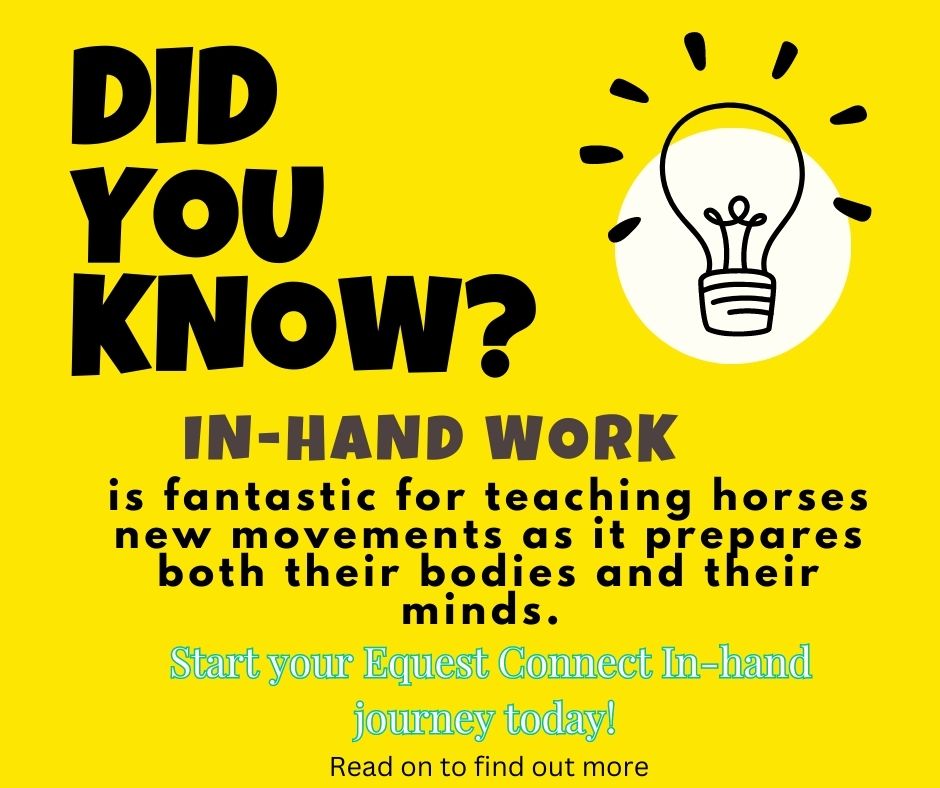
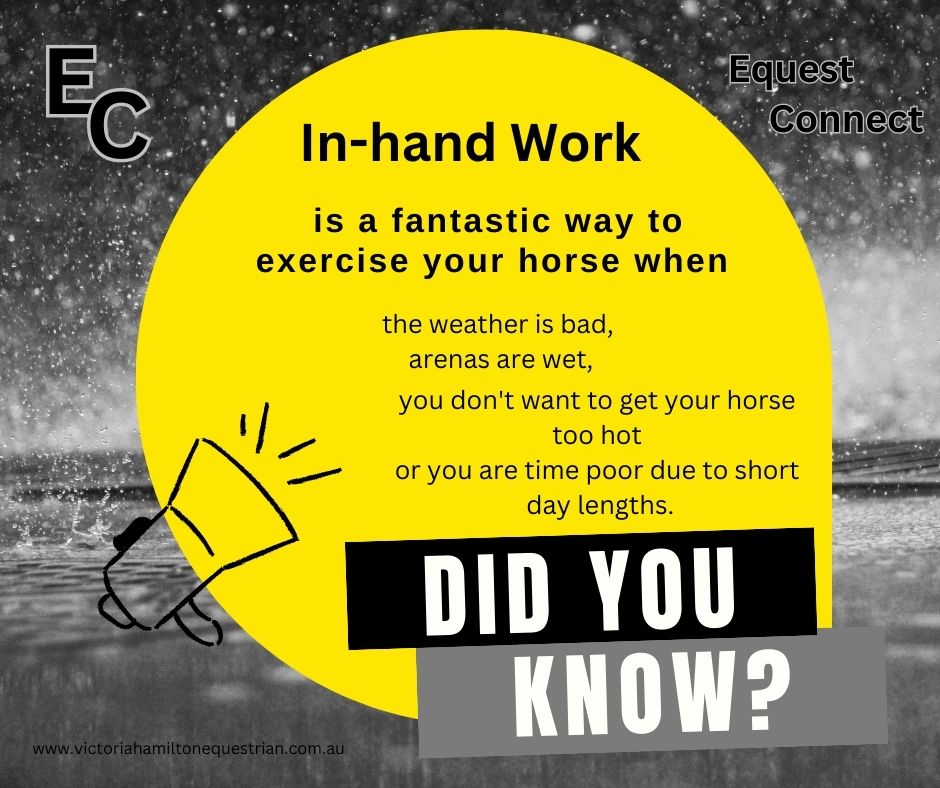
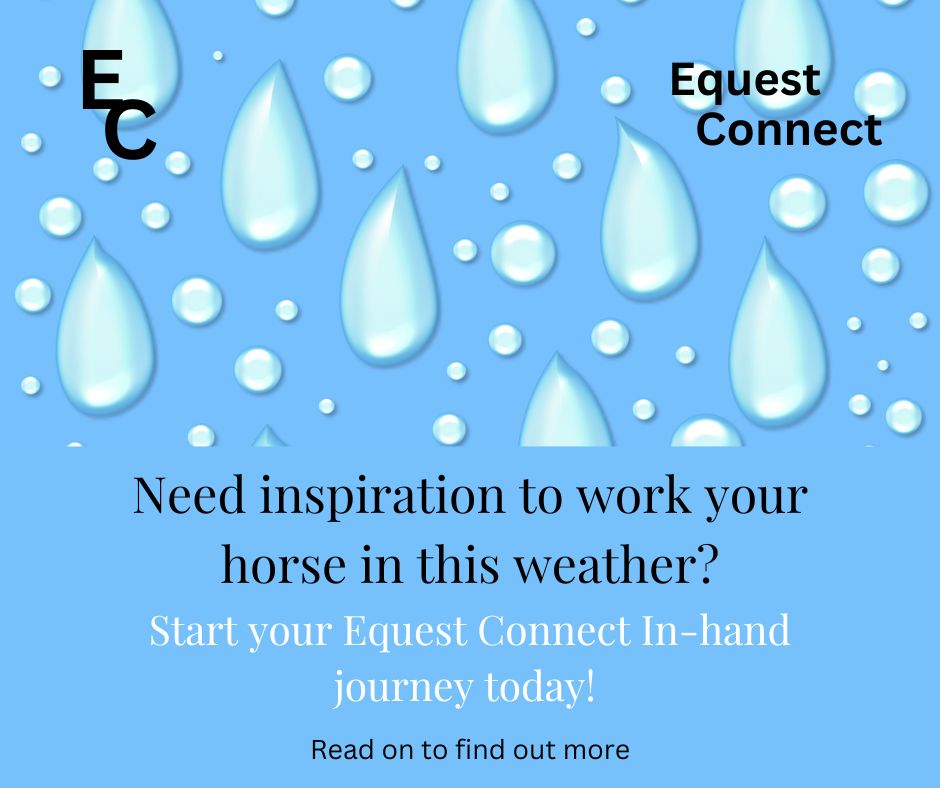
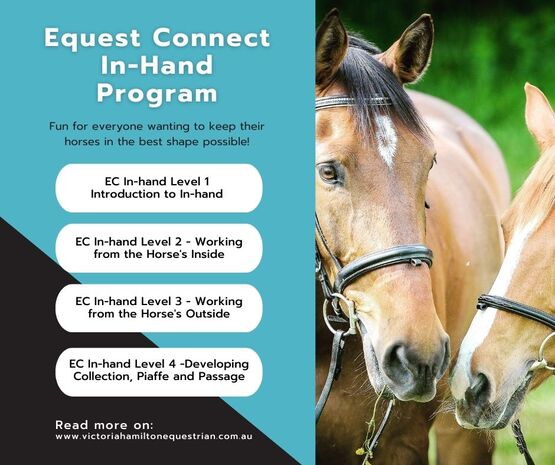

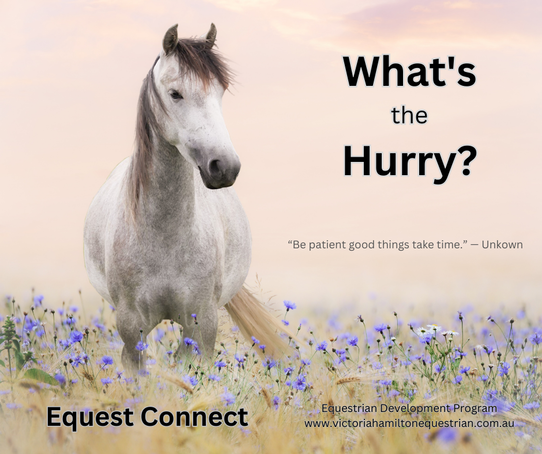
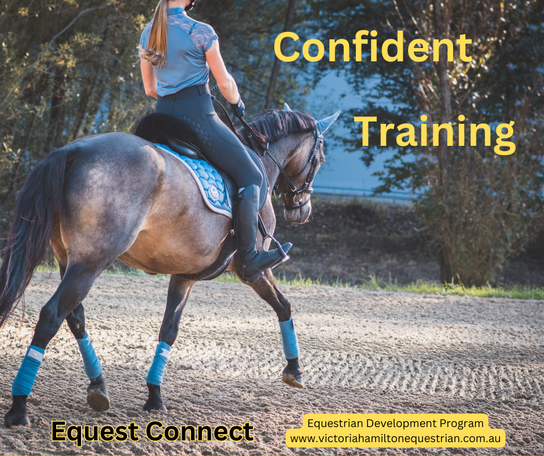



 RSS Feed
RSS Feed